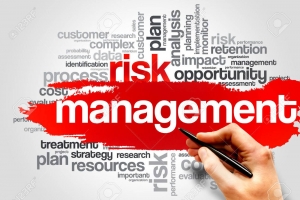The ESG Backlash: Politics and Shareholder Primacy
Reprinted from the April 2023 edition of Business Law Today. Further duplication without permission is prohibited.
By Susan A. Maslow
In the late 2010s and early 2020s, ESG—a wide-capturing acronym standing for “environmental, social and governance”—roared into action, emerging both domestically and abroad as one of the defining trends in investing, regulation, finance, and corporate governance.
ESG’s proponents have long sought a unified framework through which to describe interrelated standards of environmental sustainability and human rights, and bring them into greater alignment with the private sector’s traditional profit-seeking goals. This change in approach arguably gained in prominence after the Business Roundtable’s 2019 declaration on the purpose of the corporation, endorsing a vision of corporations being led for the benefit of all stakeholders, not just shareholders. Though many question the sincerity and commitment of the Roundtable, the ESG movement was super-charged, and it achieved mainstream status during the 2020 protests for racial justice, which spurred companies to integrate new goals for diversity, equity, inclusion, and racial justice into their broader ESG policies. Over the course of the last eighteen months, public company boards have been sued for breaches of fiduciary duty based on alleged failures to react to ESG factor “red flags.”
No Safe Harbor in the “Contract Assurances” Required in the EU Directive Proposal
The European Commission published the long-awaited Proposal for a Directive of the European Parliament and of the Council on Corporate Sustainability Due Diligence (the “EU Directive”) on February 23, 2022. It has been suggested that text found in the EU Directive “risks making the law ineffective” by implying that companies can fulfil their obligations by simply adding clauses in their contracts with suppliers and verifying compliance with “suitable industry initiatives or independent third-party verification”. The criticism is that the “contractual assurances” and verification required by Items 2(b) and 4 of Article 7, and Items 3(c) and 5 of Article 8 allow companies to shift their responsibilities on to their suppliers and to knowingly get away with harm by conducting ineffective audits or participating in voluntary industry schemes that have failed in the past.
The argument that companies can find an easy safe harbor within the EU Directive is misguided. Such condemnation places undue emphasis on the first two elements to achieve the negation of civil liability under Article 22 and ignores the third factor. A company must prove not only that (i) it used appropriate contract clauses (under to-be-provided Commission guidance), and (ii) it verified compliance, but must also prove (iii) it was reasonable to expect the action taken, including the verification process, “would be adequate to prevent, mitigate, bring to an end or minimize the extent of the adverse impact.” The last element is unfairly discounted by those that fear delivery of a safe harbor to industry influences. In addition, due account is not given to Article 22’s additional text that insists company efforts (or absence of efforts) to remediate any discovered damage and the extent of pre-harm support and collaboration to address adverse impacts in its value chains (or absence of support and collaboration) is also to be considered in determining liability.
Articles 4 to 11, 25 and 26 of the EU Directive impose due diligence obligations on subject companies and address the duty of care required of their directors in setting up and overseeing due diligence. The EU Directive has numerous “Whereas” clauses expressing a desire to incorporate the UNGPs and OECD Guidelines which require shared responsibility between buyers and suppliers. It should not be read as suggesting companies avoid liability by simply demanding conventional representations and warranties from a first-tier supplier without shared responsibility for thorough retrospective and prospective investigations to identify, prevent and end adverse impact. Any company that believes “contract assurances” without a detailed and regularly reviewed corporate strategy to address human rights, climate change and environmental consequences using contracts as one of multiple tools is destined to be found liable for damages.
Perhaps Article 22 with respect to a company’s potential civil liability could be clearer with respect to this point if it included a reference to Articles 4,5 and 6 in lieu of the existing limited reference to the obligations laid down in Articles 7(Preventing potential adverse impacts) and Article 8 (Bringing actual adverse impacts to an end). But Article 12 (Model contract clauses) of the EU Directive includes a promise that the Commission will provide guidance for model contract clauses and Article 13 (Guidelines) states the Commission, in consultation with Member states, stakeholders, the European Union Agency for Fundamental Rights, the European Environment Agency, and appropriate international bodies may issue guidelines for specific sectors or specific adverse impacts. The to-be-developed model contract clauses should reflect the characteristics and obligations found in Version 2 of the Model Contract Clauses (the “MCCs”) drafted by the American Bar Association Business Law Section’s Working Group found here Center for Human Rights. The MCCs include provisions which require:
● a joint responsibility by buyer and seller to engage in human rights due diligence, in line with the UNGPs and the OECD Guidance;
● a commitment by buyer to engage in responsible purchasing practices that will support supplier’s obligations to avoid adverse human rights impacts; and
● in the event of an adverse impact, a joint commitment that: (a) the parties will prioritize victim-centered human rights remediation above conventional contract remedies (that compensate the non-breaching party, not victims); and (b) each party’s participation in remediation shall be proportionate to each party’s causation of or contribution to the adverse impact.
The EU Directive and the right contract clauses and due diligence guidance can change the way supply chains in global markets have worked for centuries. Finally, a real tool to address modern slavery and the environmental destruction of entire communities.
Attention Importers and Retailers: Move Quickly to Remove Turkmen Cotton from Your Supply Chains
Retailers, Importers, and brands need to immediately be sure there is no cotton from Turkmenistan in their supply chains. The U.S. Customs and Border Protection (CBP) has finally announced it will turn away or seize and withhold any shipments of cotton originating in the Central Asian nation of Turkmenistan. Affected importers will clearly experience a significant, and probably costly, disruption of production- related procurement. The International Labor Rights Forum (ILRF) urged the U.S. to ban Turkmen cotton two years ago but was rejected until findings of state-enforced slave labor was documented after extensive investigation.
CBP was given the authority to ban tainted products like cotton from Turkmenistan when The Trade Facilitation and Trade Enforcement Act of 2015 (TFTEA) removed the “consumptive demand” exception to the United States Tariff Act of 1930, a commonly exploited loophole to the prohibition against importing products of forced labor. Prior to the new provision, CBP used the law only 39 times since 1930 to apprehend goods tainted at some point from creation to delivery by forced labor. Since the passage of TFTEA, CBP has issued four new Withhold Release Orders (each a WRO) on specific goods from China (soda ash, calcium chloride, and caustic soda from Tangshan Sanyou Group and its subsidiaries on March 29, 2016; potassium, potassium hydroxide, and potassium nitrate from Tangshan Sunfar Silicon Industries also on March 29, 2016; Stevia and its derivatives from Inner Mongolia Hengzheng Group Baoanzhao Agricultural and Trade LLC on May 20, 2016; and peeled garlic from Hangchange Fruits & Vegetable Products Co., Ltd. on September 16, 2016).
A March 31, 2017 Executive Order establishing enhanced collection and enforcement of antidumping and countervailing duties and violations of trade and customs laws authorized the Secretary of Homeland Security, through the commissioner of CBP, to develop implementation plans and a strategy for interdiction and disposal of inadmissible goods and to develop prosecution practices to treat significant trade law violations as a high priority.
Although 2017 saw more antidumping and countervailing duty orders and intellectual property rights protection activity under TFTEA, there have been no published detentions prior to the ban of any shipments of Turkmen cotton, although CBP pledged to the U.S. Congress that more import bans under section 307 would be forthcoming. Perhaps this is just the beginning of a long awaited CBP crack-down on forced labor imports to combat human rights abuses in global supply chains.






















